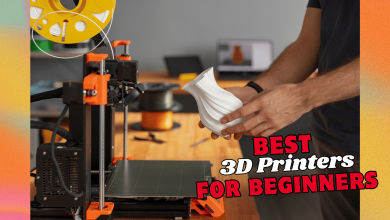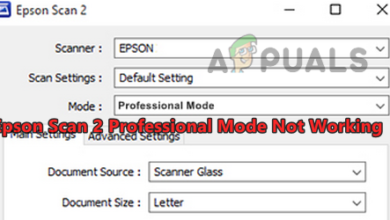How to Fix Network Printer Error 0x00000bcb?
Some Windows users have been reaching us with questions after being unable to connect to their printer over the local network. The error code that comes up is 0x00000bcb and is most commonly reported to occur just right after Windows fails to connect to a printer that’s connected to the local network. As it turns out, the issue is not exclusive to a certain Windows version as it’s confirmed to occur on Windows 7, Windows 8.1 and Windows 10.
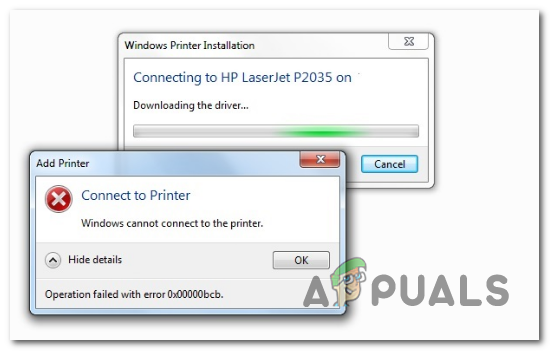
What’s causing the 0x00000bcb Printer error?
We investigated this particular issue by looking at various user reports and by testing out the various repair strategies that other affected users have successfully used to get to the bottom of this issue. As it turns out, several different scenarios will trigger this kind of issue. Here’s a shortlist with potential culprits that might be responsible for this problem:
- Printer Queue is glitched – In certain situations, this issue can occur due to an interruption when the Spooling service was preparing to send the file to the printer. In this case, the problem might be created by several different dependencies that contribute to the printing chore. In this case, the easiest way to resolve the issue is to run the Printer Troubleshooter.
- Glitched Print Spooler Service – This problem can also occur in a situation where the Print Spooler service has become glitched and it’s unable to facilitate the printing operation. If this scenario is applicable, you can resolve the issue by restarting the Print Spooler service using the Services screen.
- Access Control issues – As it turns out, this particular error can also occur due to a problem with how your operating system recognizes the access control list of the Print Spooler service. In this case, you will be successful in resolving the issue by using the cacls.exe utility inside an elevated CMD prompt.
- The improper printer prompts – As some users have confirmed, this problem can also occur due to inconsistent printer ports. Several users struggling to resolve the same issue have finally managed to restore the printing capabilities by reinstalling every printer port using Device Manager.
Method 1: Running the Printer Troubleshooter
Before we explore other more focused repair strategies, let’s see if your operating system isn’t capable of fixing the problem automatically. Several affected users have confirmed that they were able to get the 0x00000bcb fixed indefinitely by running a built-in utility capable of resolving most printer-related issues automatically via a series of predefined repair strategies.
The Windows Printer Troubleshooter will analyze your current printer driver and dependencies before determining if one of the repair strategies apply to the type of issue that is going on. As soon as you start this tool, it will begin to look for inconsistencies and will automatically apply the applicable one.
Here’s a quick guide that will help you fix the 0x00000bcb error using the Printer Troubleshooter app:
- Open up a Run dialog box by pressing Windows key + R. Next, type ”ms-settings:troubleshoot’ and press Enter to open up the Troubleshooting tab of the settings app.

Accessing the Troubleshooting tab - Once you manage to get inside the Troubleshooting tab, move over to the right-hand pane and scroll down to the Getup and running section. As soon as you get there, click on Printer, then click on Run the troubleshooter to launch the troubleshooting utility.
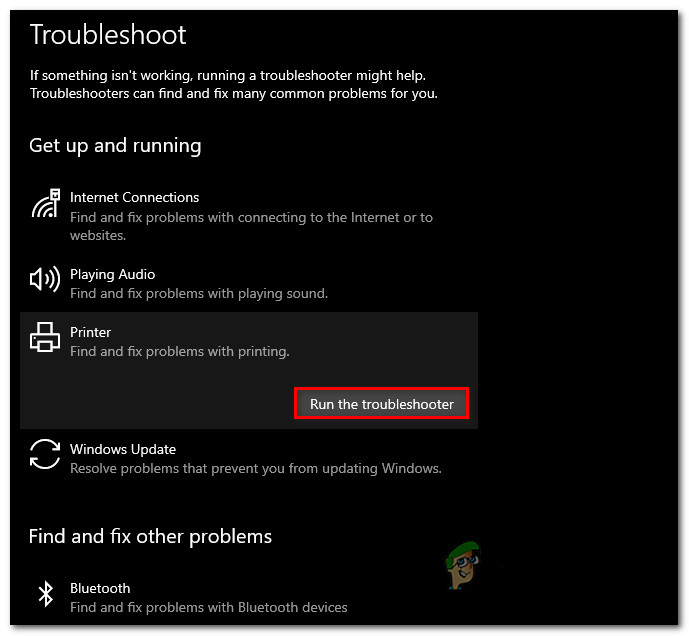
Running the Printer Troubleshooter - Once the utility is started, it will automatically scan all your printer components to try and identify the problem. If a viable repair strategy is found, the next screen will present you with a fix. To apply it, simply click on Apply this fix and wait for the repair strategy to be applied.

Apply this fix - Once the repair strategy is applied, restart your computer and see if the issue is resolved at the next startup by trying to connect to the same network printer once again.
If you’re still encountering the same 0x0000bcb, move down to the next potential fix below.
Method 2: Restating the Spooler Service
According to dozens of user reports and our verifications, the 0x0000bcb error will often occur in situations where the Print Spooler service has become glitched and is no longer able to bridge the completion of this operation. If this scenario is applicable, you should be able to revert to the default behavior only if you restart this service.
Several affected users have confirmed that after going to the Services screen and restarting the Print Spooler service, they were able to initiate a printing sequence without receiving the 0x0000bcb error.
Here’s a quick guide on restarting the Print Spooler service via the Services screen:
- Open up a Run dialog box by pressing Windows key + R. Once you’re inside the run box, type “services.msc” and press Enter to open up the Services screen. When you see the UAC (User Account Control) prompt, click Yes to grant administrative privileges.
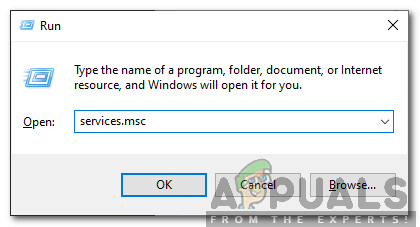
Running Services Manager - Once you manage to get inside the Services screen, move down to the right-hand pane and scroll down to the list of Service (Local). From there, locate the Print Spooler Service.
- When you finally see the Print Spooler service, right-click on it and click on Properties from the newly appeared context menu.
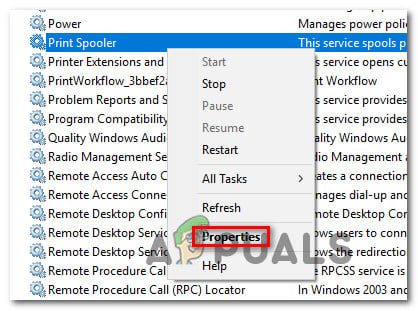
Accessing the Properties screen of the Printer Spooler service - Inside the Printer Spooler Properties menu, start by selecting the General tab from the list of available options. Once you are in the correct menu, change the startup type of this service to Automatic, then click Stop (under Service status).

Restarting the Print Spooler service - Wait a short while before clicking Start one again to essentially restart the Print Spooler service.
- Once the service is restarted, repeat the action that was previously triggering the 0x0000bcb error and see if the problem is now resolved.
If the same problem is still occurring, move down to the next method below.
Method 3: Repairing the Spooler Service
Another potential scenario that might end up triggering the 0x0000bcb error is some type of file corruption that ended up breaking the Print Spooler components. Whenever this occurs, you will not be able to establish connections with any printers (directly or over the network).
In this case, you should be able to resolve the issue by using an elevated Command prompt to modify the access control list of the Print Spooler Service. Several affected users that previously encountered the same error message have confirmed that this procedure has allowed them to establish a connection with their printer once again.
Keep in mind that this method is also recommended by MS specialists when it comes to mitigating the 0x0000bcb error. Here’s what you need to do to repair the Print Spooler service from an elevated Command Prompt:
- Press Windows key + R to open up a Run dialog box. Next, type ‘cmd’ and press Ctrl + Shift + Enter to open up an elevated Command Prompt. When you see the UAC (User Account Control), click Yes to grant admin access to the CMD utility.
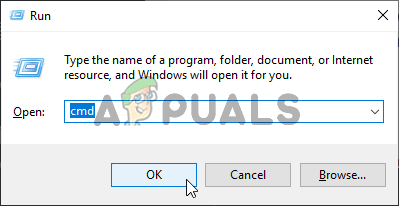
Running Command Prompt - Once you’re inside the elevated command prompt, type the following command and press Enter to navigate to the location of the Spooling service:
cd\Windows\System32\spool
- After you ensure that you’re in the correct location, type the following commands in order and press Enter to modify the access control of the Spooling service:
cacls.exe PRINTERS /E /G administrator:C
- Once the command is processed successfully, restart your computer and see if the problem is taken care of at the next system startup.
If you’ve done this and you’re still encountering the same 0x0000bcb error, move down to the next method below.
Method 4: Reinstalling all Printer ports
If you’ve come this far and you’res still encountering the same 0x0000bcb error, the only viable fix for your type of issue likely is to reinstall all printer ports involved in the operation. We managed to identify users that confirmed this procedure to be effective on Windows 7, Windows 8.1 and Windows 10.
In most cases, users have managed to resolve the issue after using Device Manager to delete all ports created for this printer, then reinstalling the printer drivers (either generic or dedicated).
Here’s a quick guide on reinstalling all printer ports to resolve the 0x0000bcb error:
- Press Windows key + R to open up a Run dialog box. Next, type ‘devmgmt.msc’ inside the text box and press Enter to open up Device Manager. When you’re prompted by the UAC (User Account Control), click Yes to grant administrative privileges.
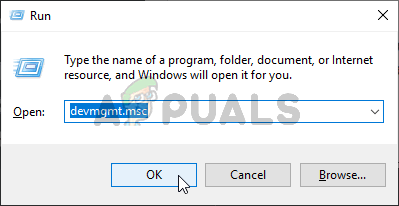
Running the Device Manager - Once you’re inside Device Manager, scroll down through the list of installed devices and expand the menu associated with Print queues.
- Next, right-click on each installed printer driver that you found under Print queues and select Uninstall from the newly appeared context menu.
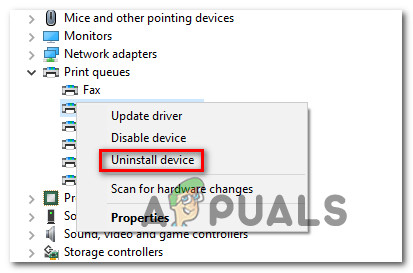
Uninstalling the Printer Driver - Once every printer driver has been uninstalled, expand the drop-down menu associated with Universal Serial Bus controllers. After you do this, scroll down through the list of install items and uninstall every Printer port by right-clicking on each one and choosing Uninstall from the context menu.
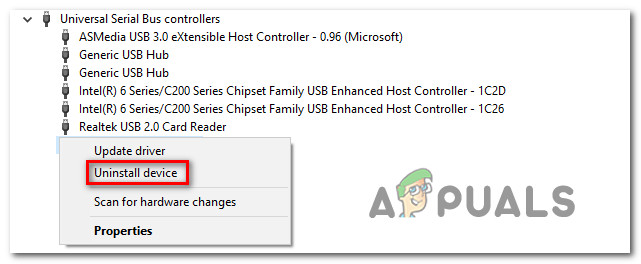
Uninstalling Print ports - As soon as every relevant printer driver is uninstalled, restart your computer. At the next system startup, your operating system will automatically install a generic set of printer drivers and ports to make the printer usable.
Note: If the generic drivers aren’t enough, you can always install the dedicated driver counterpart. - Attempt to reconnect with the printer once again and see if the operation is successful this time.




